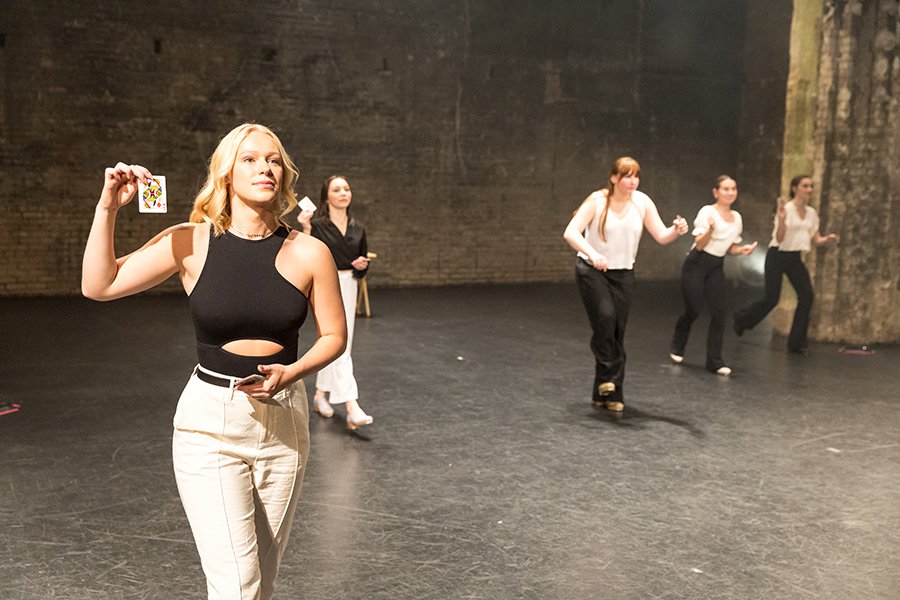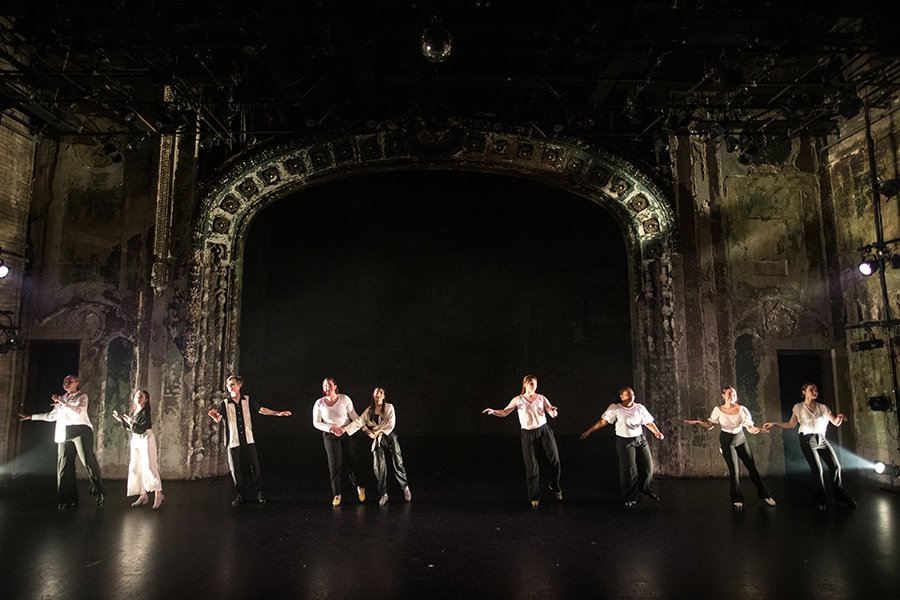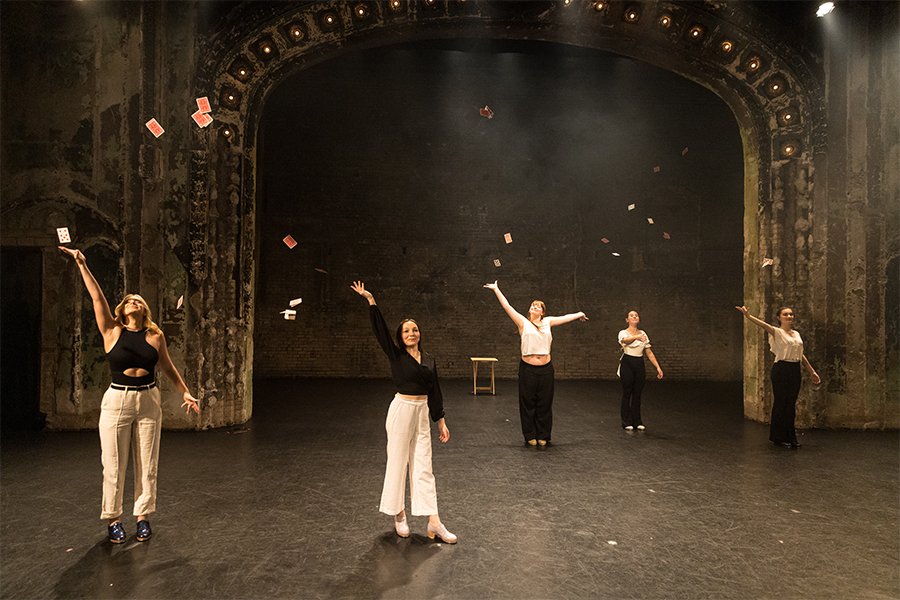Tapping into Random Motion: Art in Engineering

Vaughan Voller tapped into a dance troupe to communicate about his research into how particles move through our environment, the behaviors they exhibit, and the patterns they form. Voller’s work involves a number of critical processes, for example, the formation of harmful algal blooms in lakes or the sub-surface mineralization of C02, which is the central problem he tackles with colleagues in CEGE’s recently-funded Department of Energy Research Center on Geo-processes in Mineral Carbon Storage. He usually takes a traditional approach to problems—writing down equations and creating computer codes and simulations. His new approach, however, involved collaborating with a troupe of tap dancers. Yes, tap dancers. “My hope,” said Voller, “was that tap dance could exhibit how the combination of motion and sound provides an alternative window for examining the behavior of fundamental environmental processes.”
Voller contacted Kaleena Miller, who graduated from the University of Minnesota with a Bachelor of Fine Arts in Dance (2006) and now owns Kaleena Miller Dance. She is a dancer, teacher, and a very accomplished choreographer who lives and works in Minneapolis and New York City. Her work has been presented at the Walker Art Center, American Swedish Institute, Icehouse, First Avenue, Jazz Central, Bryant Lake Bowl, and the State Theater in Minneapolis, and at Arts on Site and Symphony Space in New York. Full disclosure, Miller is married to Voller’s son, so he had an in there.
Kaleena Miller Dance also has two teaching arms: KMD2, a pre-professional, creative incubator for emerging Tap Dance talent in the Twin Cities, and KMD Work Group, an apprentice company where post-KMD2 members are mentored through a season-long collaborative project. KMD2 participants developed the dances based on Voller’s research. The performance, Random Motions in Nature and Dance: Dust, Carpet, Motion, Flight, and Bloom, illuminates patterns that emerge from random motions. To develop the dances, Voller met with the KMD2 dancers and talked to them about key ideas related to his research. The students developed ideas and workshopped the dances with Miller and with one another. The dances created by the members of KMD2 illustrate patterns formed by particles. The work starts by exploring how particles (the dancers) interact with inhomogeneities in the environment, in particular fractal patterns. The piece then moves on to examine how random motions control the spreading (diffusion of particles), initially in well correlated motions (Brownian motion) and later in uncorrelated motions (Lévy flights). The work concludes with a demonstration on how the orchestrated motion of particles can lead to the formation of an ordered outcome, like a harmful algal bloom.
The performance on May 12 was fun and lively. Perhaps these word-based descriptions can help you envision the motion and how the performance illustrated basic environmental principles.
Random Motion. For this dance, playing cards were distributed to each dancer. At various points, the dancers would pause and randomly pick a card and display it to the audience. Depending on the color of their card, individual dancers would move left or right or forward or back before continuing the dance. To Voller’s great delight, this random movement resulted at one point in one dancer bumping into and bouncing off the arch on the stage of the Southern Theatre when she drew the same color card a couple times in a row. The professor of geomechanics and water resources gleefully exclaimed, “This particular random movement did not happen at the first show. It was great that it happened like that! It is just as it has to be to express the randomness of the motion.”

The movement titled Bloom illustrated how the orchestrated motion of particles can lead to the formation of an ordered outcome, like a harmful algal bloom. The dance started with individual dancers spread across the stage. Eventually, a pair of dancers joined up, hands across their bodies. Slowly pairs and trios emerged. Gradually all dancers were connected into one long line, just as a mat of harmful algal bloom will solidly cover a water body.

Watching, this audience member could see how these creative and expressive dances would help engineering students envision and better understand abstract concepts related to random movement of particles and ordered outcomes—and what a fun way to learn!
